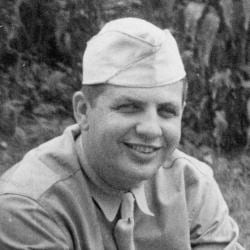Morris Swadesh facts for kids
Quick facts for kids
Morris Swadesh
|
|
|---|---|
 |
|
| Born | January 22, 1909 Holyoke, Massachusetts, U.S.
|
| Died | July 20, 1967 (aged 58) Mexico City, Mexico
|
| Education |
|
| Known for | Swadesh list |
| Scientific career | |
| Institutions | |
| Thesis | The Internal Economy of the Nootka Word (1933) |
| Doctoral advisor | Edward Sapir |
Morris Swadesh (January 22, 1909 – July 20, 1967) was an American linguist. He was an expert in how languages change over time. He also studied how languages are related to each other.
Swadesh was born in Massachusetts. His parents were immigrants from a region called Bessarabia. He earned his college degrees from the University of Chicago and Yale University. After teaching at the University of Wisconsin–Madison, he worked on projects for the United States Army during World War II. Later, he became a professor at the City College of New York. However, he lost his job in 1949 due to his political beliefs. He spent most of his later life teaching in Mexico and Canada.
Morris Swadesh was very interested in the indigenous languages of the Americas. He traveled a lot to study these languages. He also helped create new ways to compare languages. These methods are called glottochronology and lexicostatistics. He is famous for the Swadesh list. This list contains basic words that are found in almost all cultures. It helps linguists compare different languages.
Contents
Early Life and Education
Morris Swadesh was born in 1909 in Holyoke, Massachusetts. His parents were Jewish immigrants from Bessarabia. They spoke several languages, so Morris grew up speaking Yiddish, some Russian, and English.
He studied at the University of Chicago. There, he began working with a famous linguist named Edward Sapir. Swadesh followed Sapir to Yale University, where he earned his Ph.D. in 1933. Sapir's work on Native American languages inspired Swadesh to study how languages are related.
Early Career and Fieldwork
In the 1930s, Swadesh traveled widely. He studied more than 20 indigenous languages of the Americas. He did fieldwork in Canada, Mexico, and the United States.
He focused a lot on the Chitimacha language. This language was spoken by indigenous people in Louisiana. Sadly, it is now extinct. Swadesh's notes and writings are the main source of information about this language. He also studied the Menominee and Mahican languages. These are part of the Algonquian language family.
From 1937 to 1939, Swadesh taught at the University of Wisconsin–Madison. He created a special project called the Oneida Language and Folklore Project. This project hired Oneida Indians in Wisconsin. Their job was to record and translate texts in the Oneida language. This was part of a government program called the WPA.
In 1939, Swadesh went to Mexico. He helped the Mexican government with education for indigenous peoples. He learned the Purépecha language for this work. He taught people to read in their own languages first, then in Spanish. He worked with the Tarahumara, Purépecha, and Otomi peoples. Swadesh learned Spanish very quickly. He even gave lectures in Spanish and published a book in Spanish in 1941.
During World War II, Swadesh returned to the U.S. He worked on military projects for the U.S. Army and the OSS. He helped create materials for soldiers to learn languages like Burmese, Chinese, Russian, and Spanish. He also wrote easy textbooks for troops to learn Russian and Chinese.
Later Career and Research
In 1949, Swadesh lost his job at the City College of New York. This happened during a time called the Red Scare. During this period, many people were accused of being Communists. Swadesh was a member of the Communist Party. He continued to work in the United States with some funding until 1954.
In 1956, Swadesh moved back to Mexico. He became a researcher at the National Autonomous University of Mexico. He also taught linguistics at the National School of Anthropology and History in Mexico City.
In 1966, he became a professor at the University of Alberta in Canada. He was planning a big research project in Western Canada when he passed away in July 1967.
Work in Historical Linguistics
Morris Swadesh is most famous for his work in historical linguistics. This field studies how languages change over hundreds or thousands of years. For example, think about how English has changed since the Middle Ages. Languages can also split and become new, separate languages. Historical linguistics tries to find these connections.
Swadesh was a leader in developing lexicostatistics. This method compares how many basic words are similar between languages. He also helped create glottochronology. This method uses word changes to estimate when languages separated from a common ancestor.
Swadesh created the Swadesh list. This is a list of 100 or 200 basic words. These words are used to compare different languages. Examples include words for body parts, numbers, and simple actions.
Swadesh believed that all languages might have come from one single ancient language. He thought his methods could show deep connections between languages that seemed unrelated. He hoped to find a "Proto-Human" language, which would be the very first language spoken by humans. His ideas were sometimes debated by other linguists.
Personal Life
Morris Swadesh was married to Mary Haas, who was also a linguist. Later, he married Frances Leon, with whom he worked in Mexico. They divorced in the late 1950s. After returning to Mexico in 1956, he married another linguist, Evangelina Arana.
He died in Mexico City in July 1967.
See also
 In Spanish: Morris Swadesh para niños
In Spanish: Morris Swadesh para niños
- Swadesh list
- List of linguists

